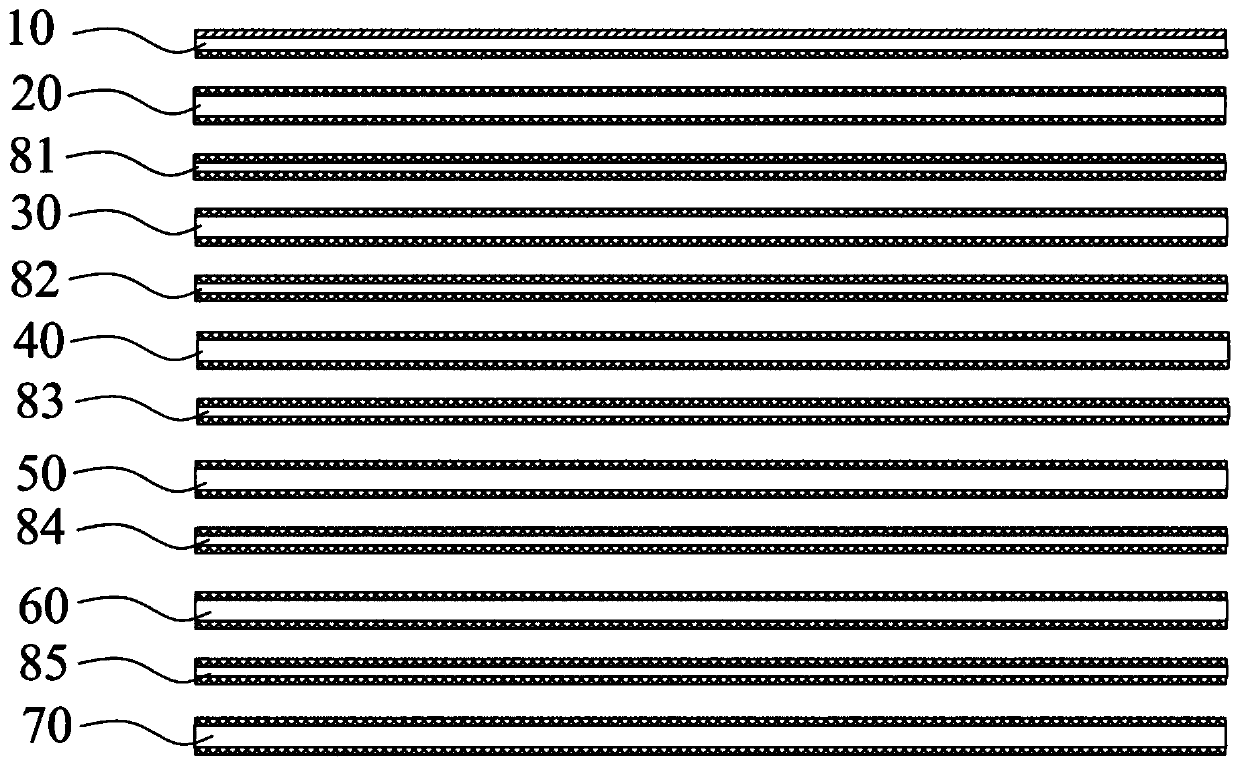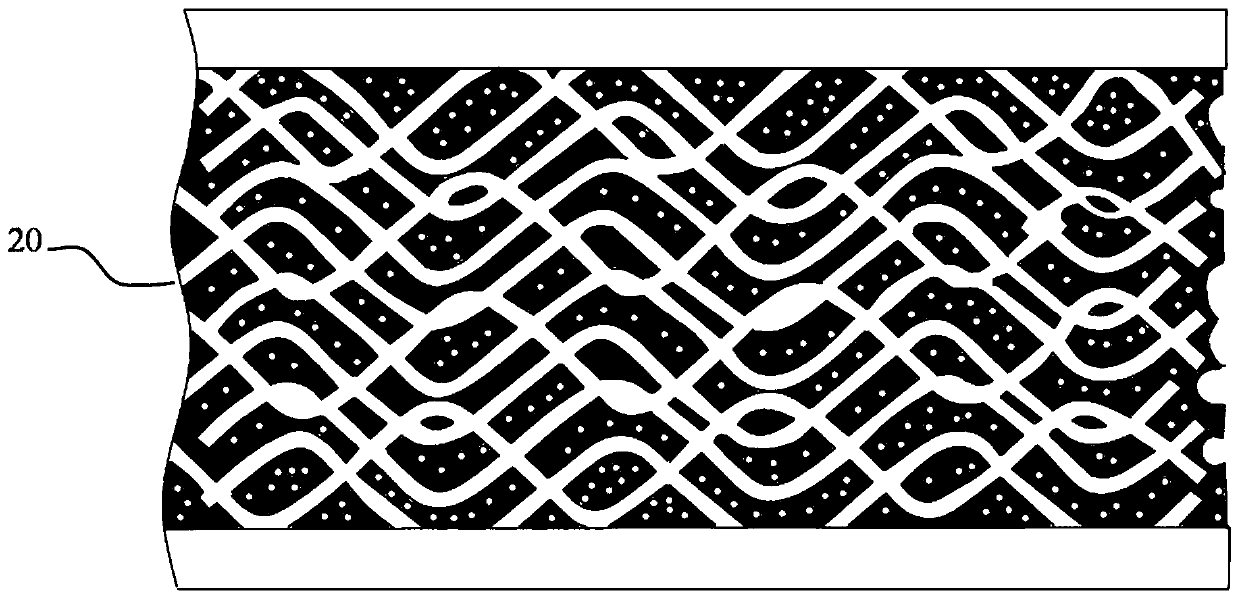Novel buffer pad
A cushioning pad, a new type of technology, applied in the direction of synthetic resin layered products, chemical instruments and methods, layered products, etc., can solve the problems of thermal deterioration of fibers, repeated use, etc., and achieve low deformation rate, good heat resistance, excellent The effect of cushioning performance
- Summary
- Abstract
- Description
- Claims
- Application Information
AI Technical Summary
Problems solved by technology
Method used
Image
Examples
Embodiment example 1
[0035] Such as figure 1 Shown:
[0036] The new cushions, from top to bottom, include:
[0037] Such as figure 2 The surface layer 10 shown, the surface layer 10 includes a polytetrafluoroethylene layer 11, a glass fiber cloth layer 12 and a fluorine rubber layer 13 containing pores inside;
[0038] The polytetrafluoroethylene layer 11 is arranged on the top of the glass fiber cloth layer 12, and part of the polytetrafluoroethylene penetrates into the glass fiber cloth layer 12; Below the cloth layer 12, and part of the fluorine rubber containing pores penetrates into the glass fiber cloth layer 12, the polytetrafluoroethylene infiltrated into the glass fiber cloth layer 12 and the pore-containing fluorine rubber infiltrated into the glass fiber cloth layer 12 are not in contact with each other. ;
[0039] The porosity of the glass fiber cloth with polytetrafluoroethylene and fluororubber in the polytetrafluoroethylene layer 11 is 20% relative to the porosity not containi...
Embodiment 2
[0059] The new cushions, from top to bottom, include:
[0060] The surface layer 10, the surface layer 10 includes a polytetrafluoroethylene layer 11, a glass fiber cloth layer 12 and a fluorine rubber layer 13 containing pores inside;
[0061] The polytetrafluoroethylene layer 11 is arranged on the top of the glass fiber cloth layer 12, and part of the polytetrafluoroethylene penetrates into the glass fiber cloth layer 12; Below the cloth layer 12, and part of the fluorine rubber containing pores penetrates into the glass fiber cloth layer 12, the polytetrafluoroethylene infiltrated into the glass fiber cloth layer 12 and the pore-containing fluorine rubber infiltrated into the glass fiber cloth layer 12 are not in contact with each other. ;
[0062] The porosity of the glass fiber cloth with polytetrafluoroethylene and fluororubber in the polytetrafluoroethylene layer 11 is 30% relative to the porosity not containing polytetrafluoroethylene and fluororubber;
[0063] The f...
Embodiment 3
[0082] The new cushions, from top to bottom, include:
[0083] The surface layer 10, the surface layer 10 includes a polytetrafluoroethylene layer 11, a glass fiber cloth layer 12 and a fluorine rubber layer 13 containing pores inside;
[0084] The polytetrafluoroethylene layer 11 is arranged on the top of the glass fiber cloth layer 12, and part of the polytetrafluoroethylene penetrates into the glass fiber cloth layer 12; Below the cloth layer 12, and part of the fluorine rubber containing pores penetrates into the glass fiber cloth layer 12, the polytetrafluoroethylene infiltrated into the glass fiber cloth layer 12 and the pore-containing fluorine rubber infiltrated into the glass fiber cloth layer 12 are not in contact with each other. ;
[0085] The porosity of the glass fiber cloth with polytetrafluoroethylene and fluororubber in the polytetrafluoroethylene layer 11 is 50% relative to the porosity not containing polytetrafluoroethylene and fluororubber;
[0086] The f...
PUM
 Login to View More
Login to View More Abstract
Description
Claims
Application Information
 Login to View More
Login to View More - R&D
- Intellectual Property
- Life Sciences
- Materials
- Tech Scout
- Unparalleled Data Quality
- Higher Quality Content
- 60% Fewer Hallucinations
Browse by: Latest US Patents, China's latest patents, Technical Efficacy Thesaurus, Application Domain, Technology Topic, Popular Technical Reports.
© 2025 PatSnap. All rights reserved.Legal|Privacy policy|Modern Slavery Act Transparency Statement|Sitemap|About US| Contact US: help@patsnap.com



